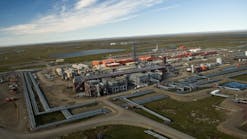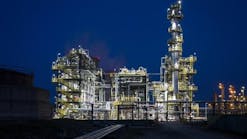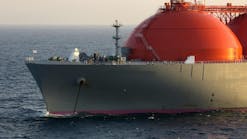Peru estimates it needs drilling investments of $287-360 million/year over the next 5 years in order to double its oil reserves to 700 million bbl.
Perupetro Pres. Rafael Samaniego said drilling should total 40-50 wells/year, each costing about $7-8 million.
Therefore, he said, the nation needs investments totaling $112.5-150.0 million/year just to replace the oil it consumes, about 45-50 million bbl/year, and to maintain current reserves of 350 million bbl.
Peru's reserves peaked at about 820 million bbl in the early 1980s and have been declining since. Production averages about 100,000 b/d.
Samaniego made the statements Sept. 4 in Lima during discussions about the oil industry held by the Peruvian Congress's Energy and Mining Commission.
Also participating were Peru's former energy and mines minister, Fernando Sanchez, now with the Energy Commission for Latin America, and Felipe Thorndike, vice-president of the national mining, petroleum, and energy society.
Policy options
Perupetro estimates the nation will have a $430 million oil trade deficit by the end of this year.
It does not expect a surplus until the Camisea natural gas fields start producing around 2004.
The national oil agency said it plans to encourage new exploration by re-evaluating contract terms and the geological risks of concessions.
It said it must do a better job of competing for foreign investment with neighboring countries, such as Ecuador, Bolivia, Brazil, and Colombia.
Generally, in the past, Peru's government has sought higher royalties than other nations with similar prospects that carry less risk.
And other Latin American countries have more generous tax rates and contracts that allow longer lease terms with more flexible work programs.
Thorndike urged the government to resume its privatization drive to ensure a free market. He also said Perupetro should be given a free hand to negotiate oil contracts and actively seek foreign investments.
Camisea
The government is expected to issue a concession soon for construction and operation of the Camisea gas and liquids transport and distribution system.
The trans-Andean pipeline project will move gas 310 miles west for distribution in the Lima vicinity, mainly to proposed power projects.
Several international consortia are bidding to build and operate the system, which is expected to total about $1 billion. It is the second part of the $2.6 billion Camisea project-the first involving development of the gas-condensate reserves-in the Amazon jungle.
The government has delayed issuing the transportation concession several times since last November, most recently because of political turmoil surrounding the controversial reelection of Pres. Alberto Fujimori last May.
Camisea is one of Latin America's largest natural gas fields. The government expects the project to generate more than $6 billion in tax revenues over 30 years-a badly needed boost for Peru's commodity-based economy.


